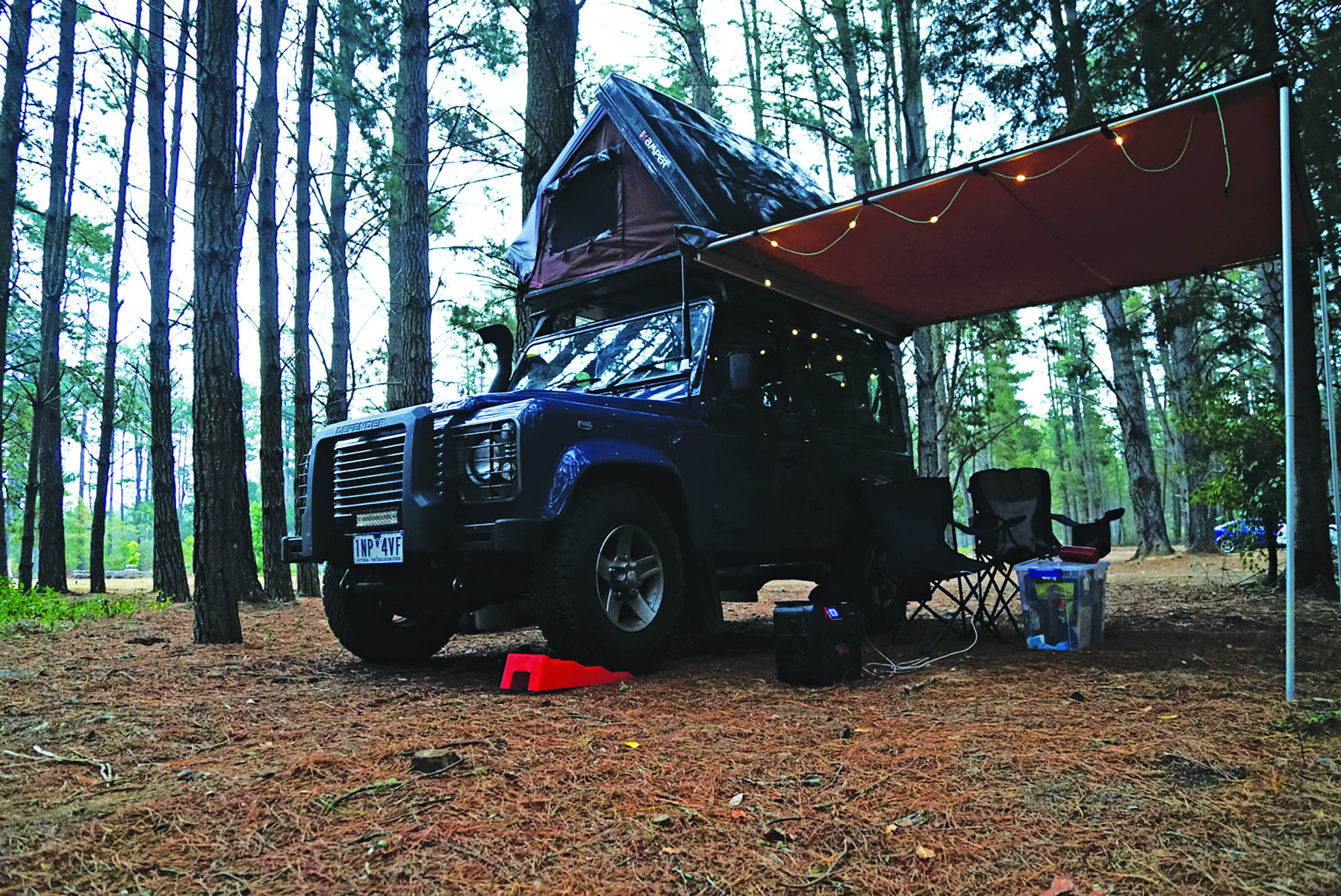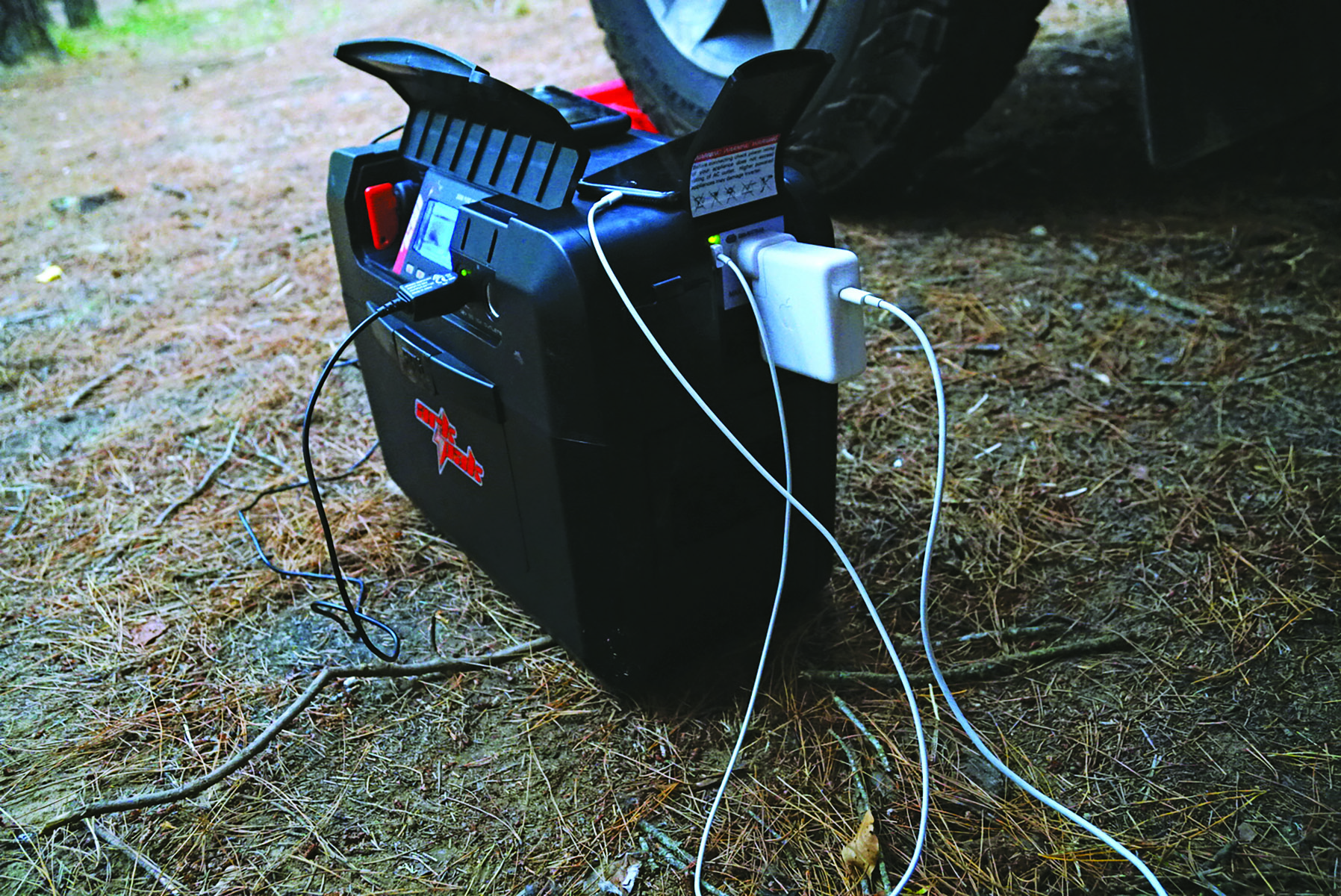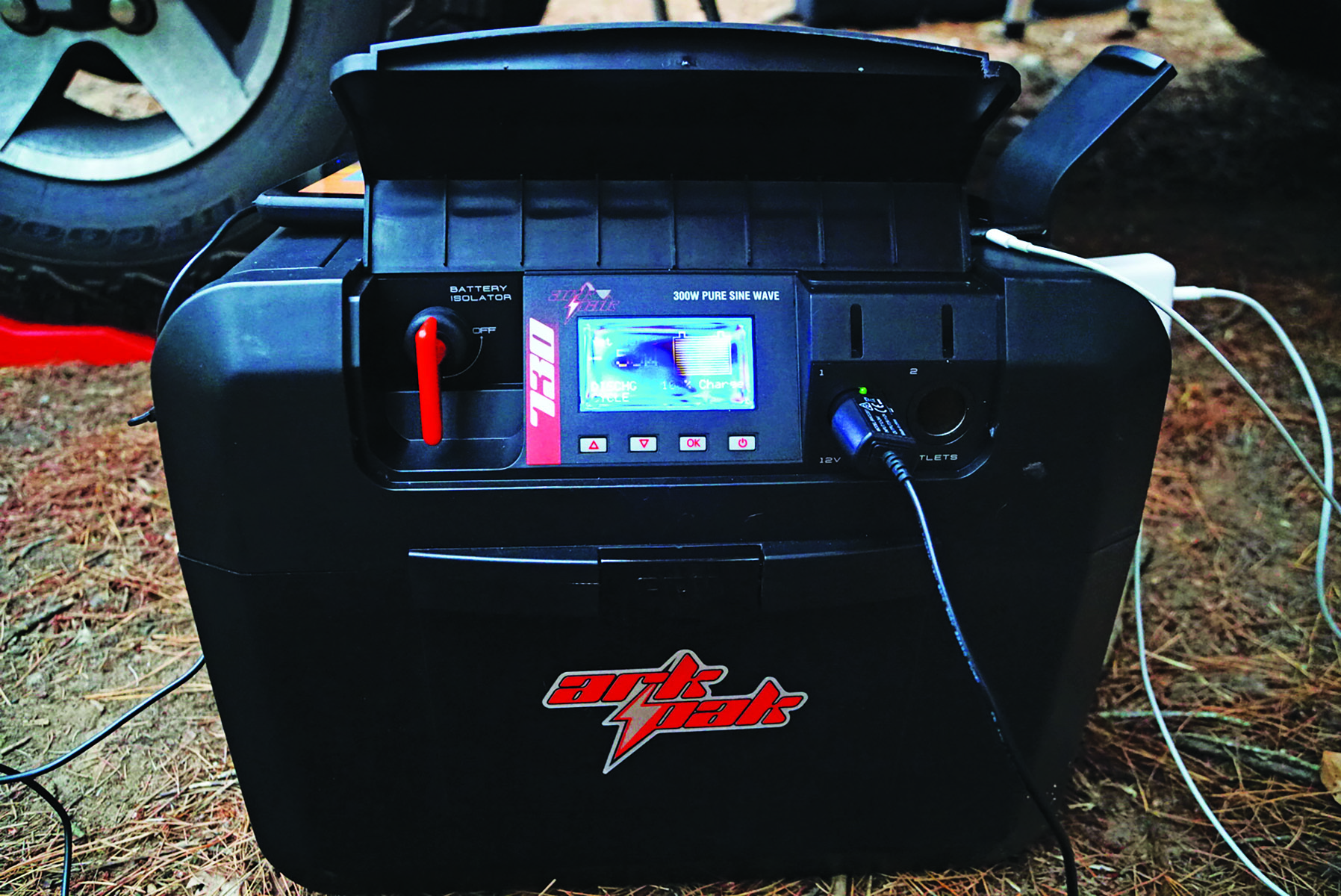When I first laid eyes on the ArkPak 730, portable battery boxes weren't something I'd thought about. I've always had a vehicle-based dual battery system and never found it lacking, but as I inspected the black box my imagination sprang to life with scenes that would be perfect for such a device. I envisaged a picturesque campsite, somewhere by the water, my laptop glowing as I unloaded my camera's SD card after a hard day's work, a cold one close to hand as the fridge hummed nearby.
However, there was one more thing I needed before I rode off into the sunset like a bona fide digital nomad — the ArkPak needs a battery. In order to experience the wonders of the battery box to the fullest, it’s necessary to invest in a good quality deep-cycle battery. One of the key features of the ArkPak is its multi-chemistry battery selection, which allows users to install a lead acid, gel, calcium, AGM or lithium battery, and utilises a variety of settings and charging cycles to ensure the battery performs at its best.
The merits of this multi-chemistry compatibility were evident on my trip to the local Battery World store. I had no idea there were so many choices. Anyone looking to set up a battery box needs to remember that after dropping roughly $500 on the ArkPak 730, it’s necessary to spend close to that amount again for a decent battery, or as much as $2,000 for a top-of-the-line lithium ion version. Keen to avoid a lecture from the accounts department, I settled on a 120 amp-hour absorbed glass mat (AGM) battery for about $400. While it would have been far cheaper to opt for a lead acid battery, one key consideration was that lead acid batteries are liable to leak or spill, meaning they’re not ideal for portability.





Installing the battery was a breeze thanks to the ArkPak's easy to read screen and intuitive system. Then came the moment of truth, the thing I'd really been curious about; how easy was the ArkPak 730 to move with a battery inside? The quick answer, it’s not. On its own, the ArkPak weighs in at just under five kilograms. Once I’d added 35 kilograms of battery, wrapped my fingers around the inset handles and loaded it into the back of my Land Rover, I was forced to reconsider the meaning of ‘portable’.
THE JOURNEY
I left it in the back of the car for a few days before setting off on a drive from Brisbane to Melbourne. The plan was to utilise the ArkPak for any task that would usually require my vehicle-based battery system. I arrived at camp after dark on the first night and ran a cable from the Anderson plug of the ArkPak to the Anderson that supplies power to my rooftop tent. I left the box where it sat in the back of the car — nice and easy. After a spot of reading, I plugged my Kindle and iPad into the USB outlets in the tent, switched off the light and was out.
In the morning, the display on the ArkPak assured me that my usage the previous evening was negligible. It is, however, easy to recharge the battery after a big trip using 240-volt mains power and the clever staged charger built into the box. You can plug into a solar panel while you’re set up at camp for extended periods or you can charge through your vehicle’s 12-volt accessory sockets or an Anderson plug as you drive.
Later that afternoon I arrived at my second camp with plenty of daylight to spare. I popped the ArkPak under the awning, took a few glamour shots, pulled out my laptop and flipped on the 300-watt inverter to provide juice to the 240-volt outlet and five-volt USB socket. As I unpacked my web of charging cables, it struck me as odd that there’s only one USB outlet on the ArkPak, since almost everything I use these days charges via USB — even my awning lights. But this is quickly remedied by popping an adaptor into one of the 12-volt sockets.
On this short trip, I didn’t come close to drawing significant quantities of power from the ArkPak, or having it run anything for extended periods of time. Ark claim that a 130 amp-hour battery will be able to power a 37-litre 12-volt fridge for seven days, which seems perfectly reasonable after my experience so far.
THE WRAP
After my brief shake-down, I’m keen to take the ArkPak on a longer trip. Ultimately, it seems best suited to the kind of camper who plans to set up an elaborate site and settle in for a week or more. Having a dedicated power source that allows you to run a fridge and lighting at camp, while still being able to take the car on day-trips is something that could come in handy, though the lack of USB points may be a bit frustrating. It’s also possible to permanently mount the ArkPak in a vehicle or camper trailer and have it wired up as a self-contained system.
I like the ArkPak because you don't need to be an expert in batteries and power consumption to set it up and get it going, and it’ll be a welcome addition at my next multi-night remote campsite. Even still, I might nip down to Bunnings first and see what I can do about sticking some wheels on it.
ArkPak 730
RRP: $499
More info: www.arkcorp.com.au




